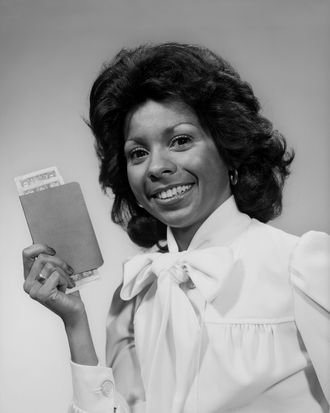
Email your money conundrums, from the technical to the psychological, to mytwocents@nymag.com
There are competing theories on side hustles: Some say skip them, and throw all your energy into your full-time career. Others don’t have that luxury — the job they love simply doesn’t pay enough, and extra work provides the income essential to staying afloat. And then there’s a third camp — their employer pays the bills, but leaves their extracurricular talents (calligraphy, cheese-making, clowning?) untapped. The truth is, most humans are good at more than one thing, and should feel welcome to hone and monetize their skills as they please — or not.
I used to be in the camp of committing every ounce of effort to my day job, but once I started freelancing, I got hooked — the longer hours took a serious toll on my sleep and social life, to be sure, but I liked diversifying my projects, and banking the additional cash made a major impact on my finances (to the tune of almost $35,000 last year, although that was extreme, and I’ve since cut back my hours). Here’s how five other women make their second jobs work with their primary ones, and what they earn from both.
Jordan, 33, senior manager at a large tech company
Side job: Personal shopping
Salary: $120,000
Extra income: About $4,000 a year
How she makes it work: She’s always monetized her passion projects, but it’s rarely been about the cash. “When I was just out of college, I started selling custom cakes out of my apartment on the weekends,” she says. She started her personal shopping gig a few years ago after creating a blog about gift ideas that sparked requests from friends; now, she takes a small commission from each client purchase. “The income doesn’t make a big impact on my spending or budgeting, since it’s fairly nominal compared to my salary,” she says. “But there have been times where I’ve been on the fence about a pair of shoes or a nice dinner out, and knowing I’ve made extra money pushes me toward treating myself.”
Hours involved: Her tech job requires a full workday, and it’s customary to log in after hours from home. “My side business doesn’t take up a ton of time, but I do expend a great deal of mental energy on it, which can make me feel kind of distracted. I have to remind myself that no one’s forcing me to do it, and if I start to find it’s not fun anymore, I should just stop.”
Jennifer, 29, marketing associate at a large fashion retailer
Side job: Baking dairy-free, gluten-free desserts
Annual salary: $75,000
Extra income: About $300–$400 per month
How it works: Jennifer started selling her baked goods unofficially in 2015, and then business picked up. “It’s all been word of mouth — I don’t have a website or anything,” she says. “I get orders via email, phone calls, texts, and messages through social media.” Some months are busier than others — particularly around the holidays — so the income is sporadic, but it makes a difference. “At first, earning a few bucks from baking a birthday cake or a batch of cookies was great for saving for splurge items, like a new bag,” she says. But lately, she’s been reinvesting the profits in ways that will grow her business — like new baking tools and a professional logo — with an eye toward running it full-time. “Opening a bakery is a newish dream of mine that wasn’t part of my original career plan, so I’m taking small steps to make it a reality,” she says.
Hours involved: “My day job is 9 to 5, and that comes first because it’s what pays my rent,” she says. Meanwhile, her baking business takes about 20 to 25 hours per week, including kitchen time, working with clients, prep and research for recipes, and managing social media. When orders get hectic, the first thing to go is sleep. “If someone comes to me on a Monday and needs a cake for Thursday, I’ll figure out how to fit it into my week,” she says. Otherwise, she stacks it into her weekends — last Saturday, for instance, she baked four cakes before noon.
Drew, 34, editor at a women’s publication
Side job: Adjunct professor of ethics
Salary: $60,000
Extra income: $7,000 a year
How it works: Two years ago, Drew switched from full-time academia to editorial work; previously, she’d done freelance writing in addition to teaching, so she essentially flipped careers. “My speciality is reproductive ethics, so transitioning to journalism with a focus on women’s health was a natural fit,” she says. In addition to providing extra income — which she uses to help support her parents and pay off her student loans — her professor role allows her to keep her academic affiliation, which boosts her credibility in her day job. “It’s beneficial for me to keep one foot in each world,” she says.
Hours involved: Her editor job takes 40 to 50 hours per week, and teaching requires about ten; she admits that they do compete for her attention. “I have class in the evenings, so I’m often tired during my editing job the next day, and that isn’t great,” she says. “I also get emails from students all day long, which I can’t respond to until I get home from work.”
Andrea, 32, creative director at an advertising firm
Side jobs: Yoga teacher, poet
Salary: $91,000
Extra annual income: About $5,000 from yoga and $300 from poetry
How it works: In addition to her full-time job, Andrea teaches two yoga classes per week, as well as the occasional weekend workshop; she also subs for other teachers sometimes. “It’s not big bucks, but it’s not nothing,” she says. “It’s paying for a large chunk of a trip to Brazil with my husband and son this fall.” As for the poems: She works with a local poetry nonprofit that sends poets to public events, where they talk to strangers and then write a poem about them in an hour. “Thanks to grant money, we get $50 per poem, which could add up if I did it more often,” she says.
Hours involved: Her day job takes up the vast majority of her time, but planning yoga classes in advance and teaching does take around six or seven hours per week, which can get stressful. “I don’t sleep enough, and I also need to make sure I spend time with my kid,” she says. “But the side gigs are things I love, and I don’t want to give them up.”
Monique, 34, staff journalist at a national news organization
Side job: Freelance writing and editing, under a pseudonym
Salary: $80,000
Extra income: About $15,000 a year
How it works: She’s freelanced on top of full-time work throughout her career, initially to supplement her entry-level salary and later to support her family. “When I was pregnant, I relied on freelance work to help cover my maternity leave, hospital bills, and impending child-care costs,” she says. Still, she has to keep it quiet. “At the publication where I work now, it’s not really kosher for me to write elsewhere, so I make a point to ensure there’s zero crossover in terms of contacts and types of content,” she says. “Since I’m doing it strictly for money, it’s usually soul-sucking projects for brands, which pay a lot more than publications.”
Hours involved: Her day job is pretty 9 to 5, with much longer hours when she’s working on a big story. “Generally though, I’ll come home from the office, hang with my kid, eat dinner, and then work for a few more hours before bed,” she says. “I’m able to control the freelance schedule a bit more now that I’m finally making a high enough salary that I could live off that if necessary. Sometimes I’ll go a bit crazy and agree to a lot of projects, but when I’m feeling burnt out I’ll just back off.”





